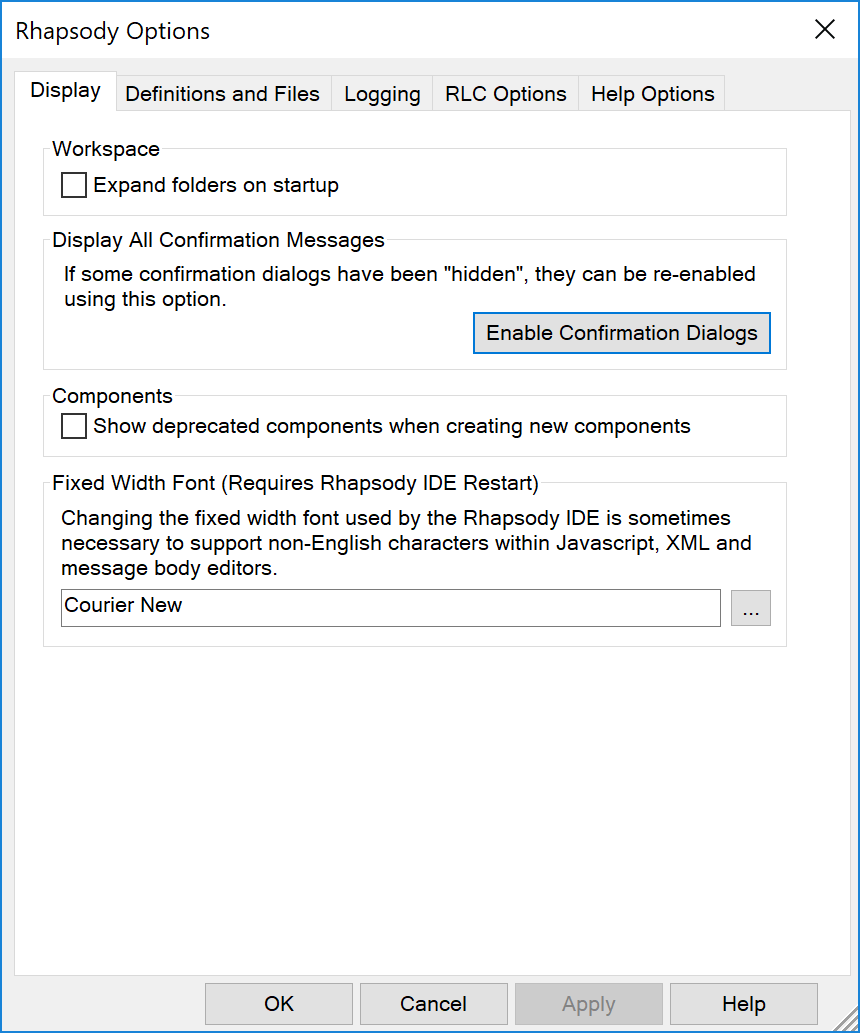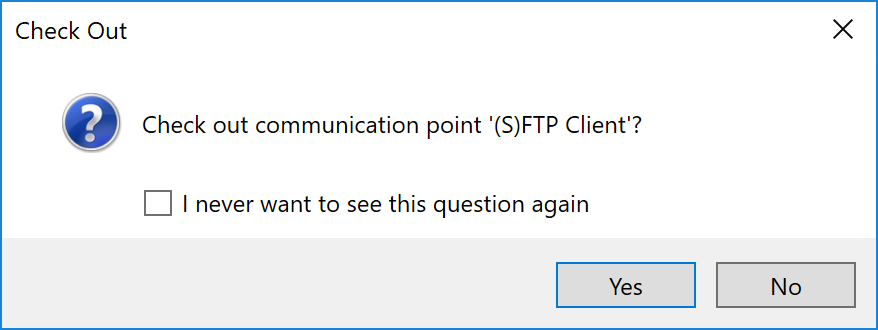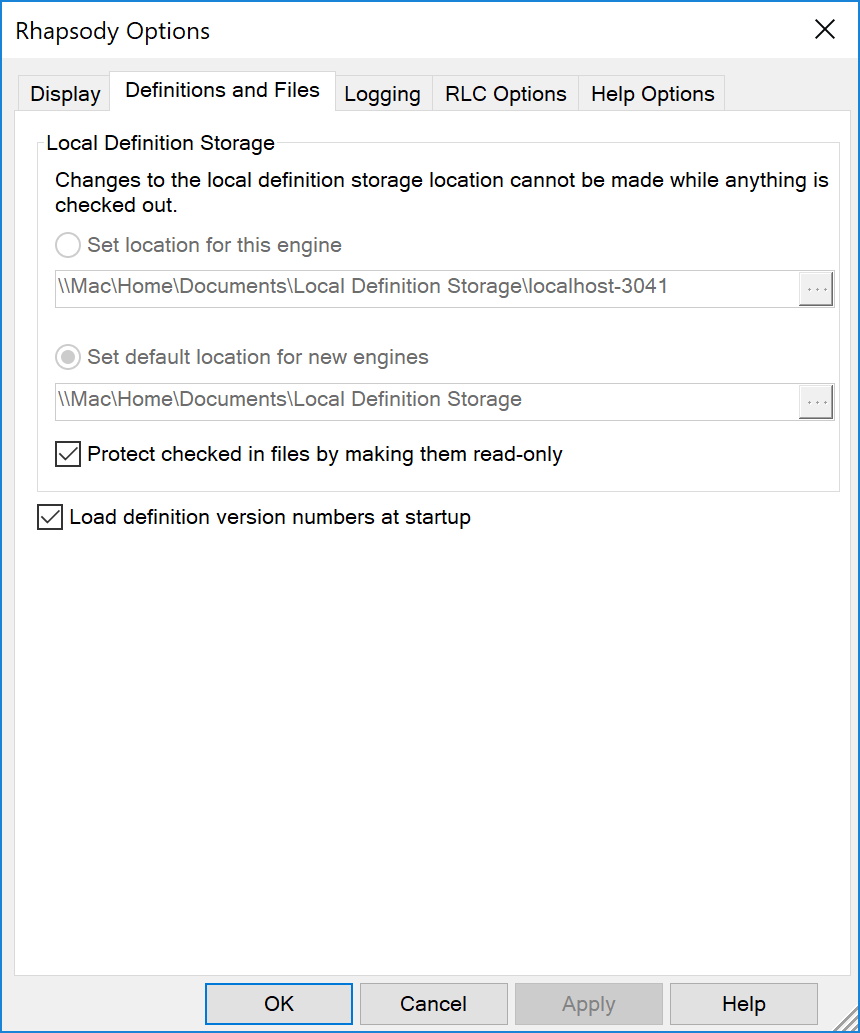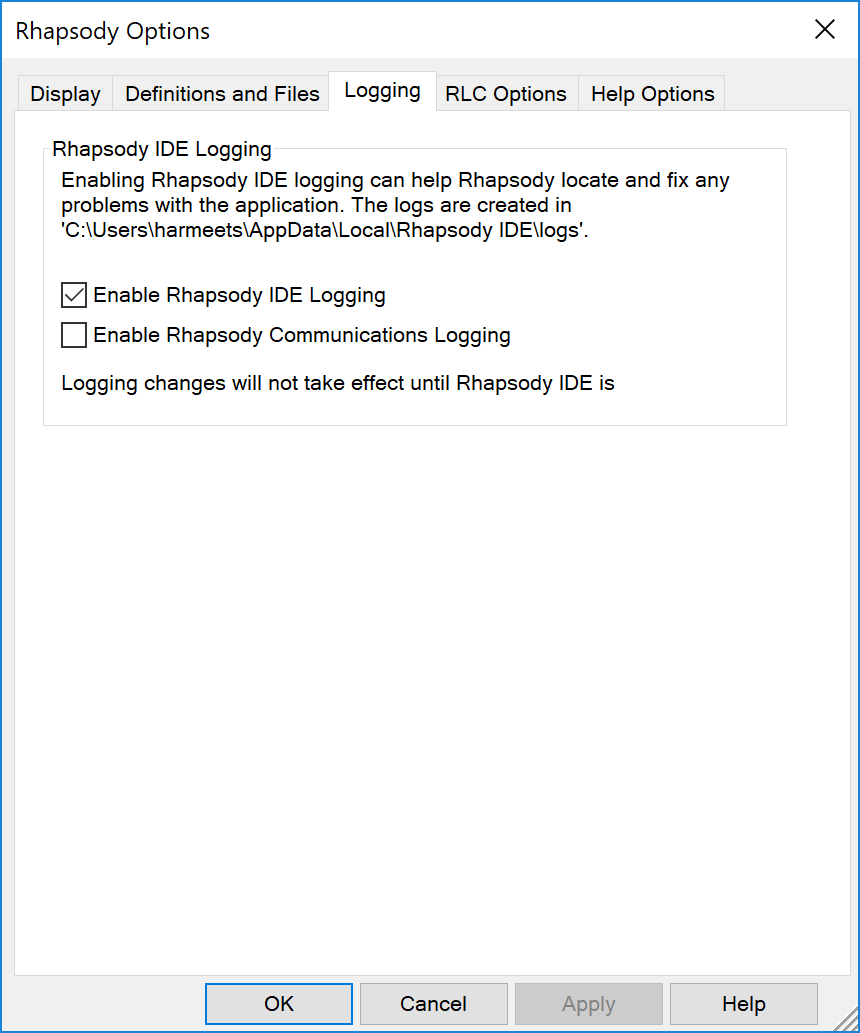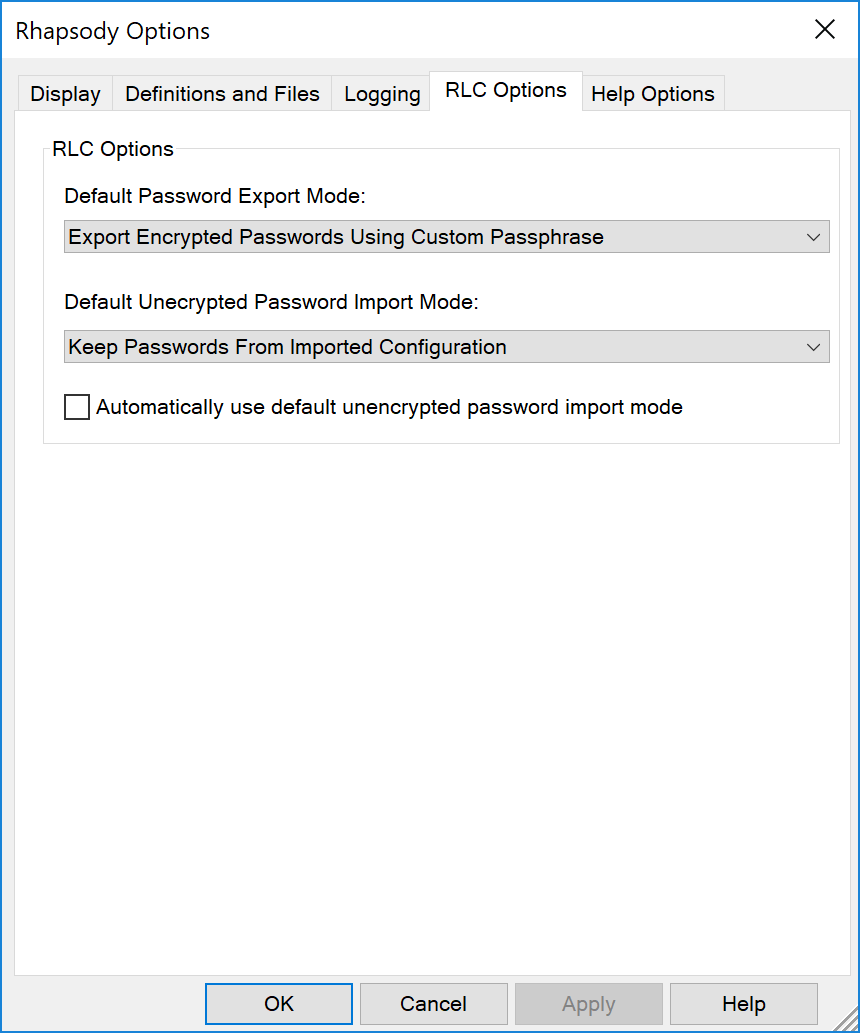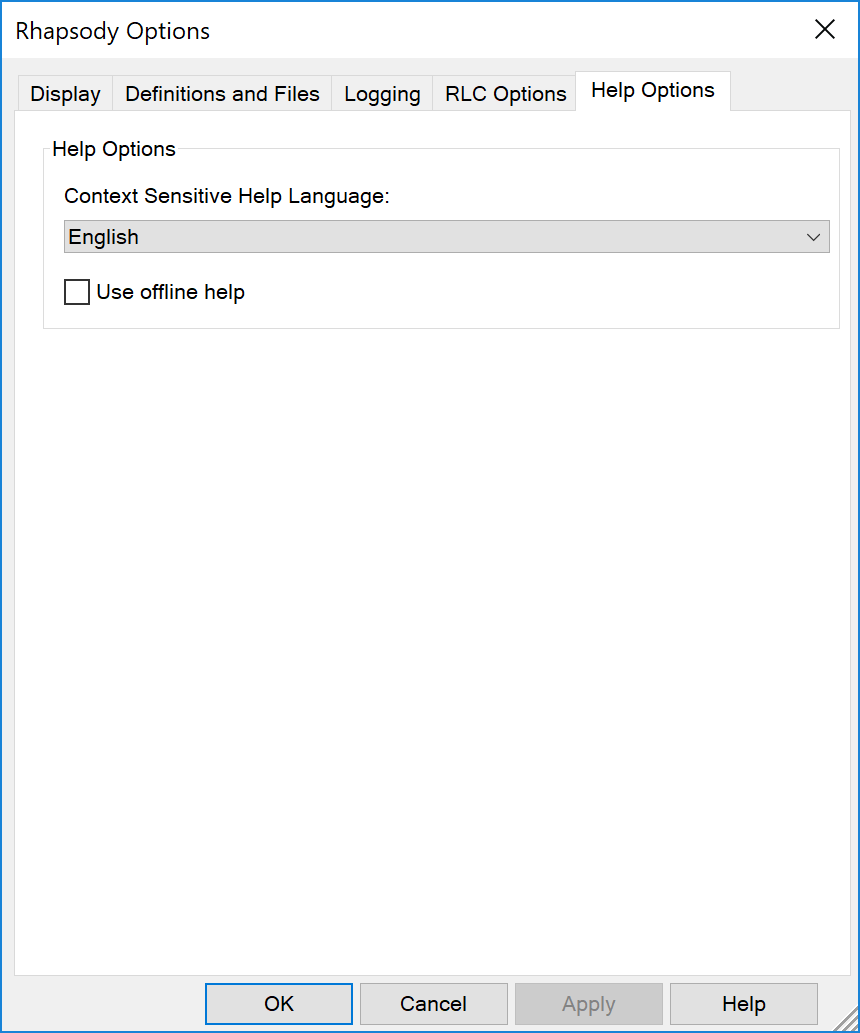You can define how details are displayed in Rhapsody IDE and enable IDE debugging from the Rhapsody Options dialog. To display this dialog, on the Rhapsody IDE menu, select Rhapsody>Rhapsody Options:
Display
The Display tab enables you to configure how Rhapsody IDE displays items and activate confirmation dialogs:
Option |
Description |
|---|---|
Workspace |
If you select the Expand folders on startup checkbox, the contents of all route and communication point folders are displayed when Rhapsody IDE is restarted. This may not be desirable if there are a large number of components. You can only change the display if all components are currently checked in. |
Display All Confirmation Messages |
Selecting the Enable Confirmation Dialogs button redisplays all suppressed confirmation dialogs. Many actions in Rhapsody are associated with confirmation dialogs, for example:
You can stop these warning messages from being displayed, by selecting the I never want to see this question again checkbox. However, it can sometimes be useful to redisplay all suppressed warning messages, for instance in the case of new users. |
Components |
Selecting the Show deprecated components when creating new components checkbox displays any obsolete or superseded filters and communication points in the Filter Toolbox and Create Communication Point dialog, respectively, (after you restart Rhapsody IDE). |
Fixed Width Font |
If you cannot view the non-English JavaScript characters, try changing the fixed-width font that Rhapsody IDE uses. If you change the font settings, Rhapsody IDE must be restarted. |
Definitions and Files
The Definitions and Files tab enables you to define the default local definition storage location:
Option |
Description |
|---|---|
Local Definition Storage |
Determines where definition files and local copies are saved.
|
Load definition version numbers at startup |
Whether definition version numbers should be loaded when Rhapsody IDE starts up. |
Logging
The Logging tab enables you to enable Rhapsody IDE logging. The Rhapsody IDE Log is a debug tool normally used during implementation to identify and solve problems with Rhapsody IDE. Under normal circumstances it does not contain information relevant to a general user.
Option |
Description |
|---|---|
Enable Rhapsody IDE Logging |
Select this checkbox to generate Rhapsody IDE logs. |
Enable Rhapsody Communications Logging |
Select this checkbox to log Rhapsody communications. |
Rhapsody IDE must be restarted for the changes to take effect.
RLC Options
The RLC Options tab enables you to select the default password import and export options:
Option |
Description |
|---|---|
Default Password Export Mode |
Selects the default password export mode used when saving a configuration as an RLC file. Refer to Saving a Configuration with Passwords for details. |
Default Unencrypted Password Import Mode |
Selects the default password import mode used when loading a configuration from an RLC file that contains unencrypted passwords. Refer to Loading Configurations with Unencrypted Passwords for details. |
| Automatically use default unencrypted password import mode | Enables the default unencrypted password import mode is used without prompting the user when loading a configuration from an RLC file. |
Help Options
The Help Options tab provides a drop-down list of all available languages for context-sensitive help. You can also select whether you wish to use offline help by default (as opposed to online help) by checking the Use Offline Help checkbox.
Selecting the Help button on any Rhapsody IDE dialog or in the Management Console by default will create an internet connection to the DOKI, where up-to-date, context-sensitive information for the relevant release of Rhapsody can be viewed.
Content relating to the dialog or screen from which the documentation was accessed appears in the right-hand panel, often with links to its Next and Previous pages. The Menu Bar on the left provides links to specific documents such as the product manuals, release notes and known issues, and includes a Search panel into which keywords can be entered to locate pages with matching content.
Rhapsody and Rhapsody Messaging Toolkit (Symphonia) product documentation is included in PDF format as part of the Rhapsody IDE installation. These files are located in the folder \Program Files (x86)\Rhapsody\Rhapsody IDE 6\Documentation. You can also obtain up-to-date PDF files from Printable Documents.
